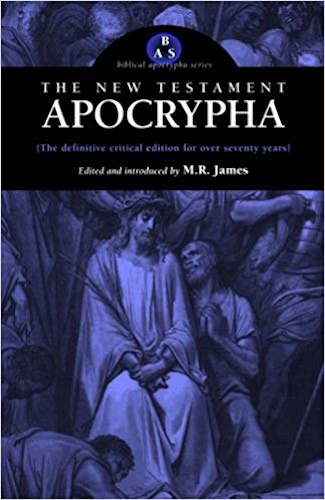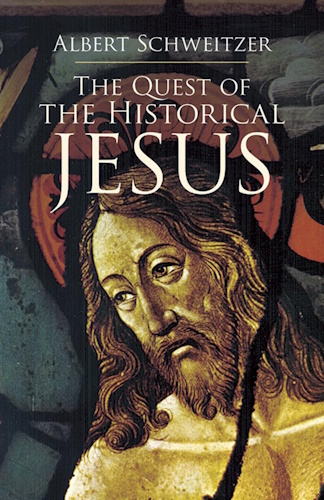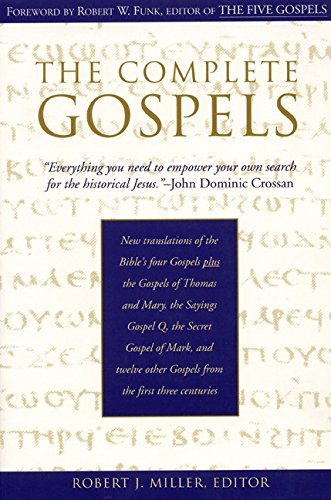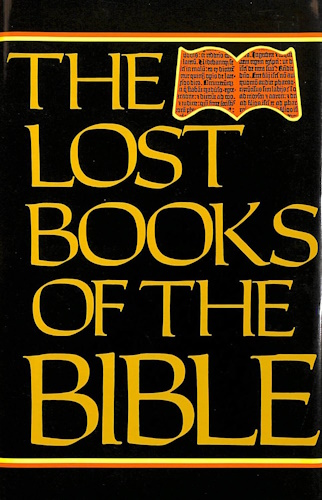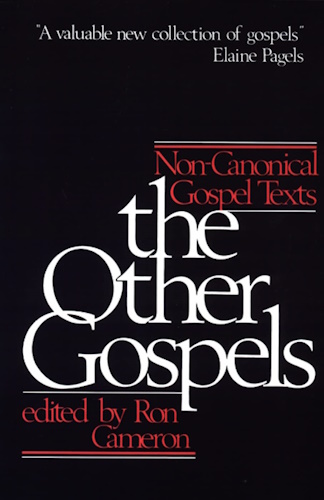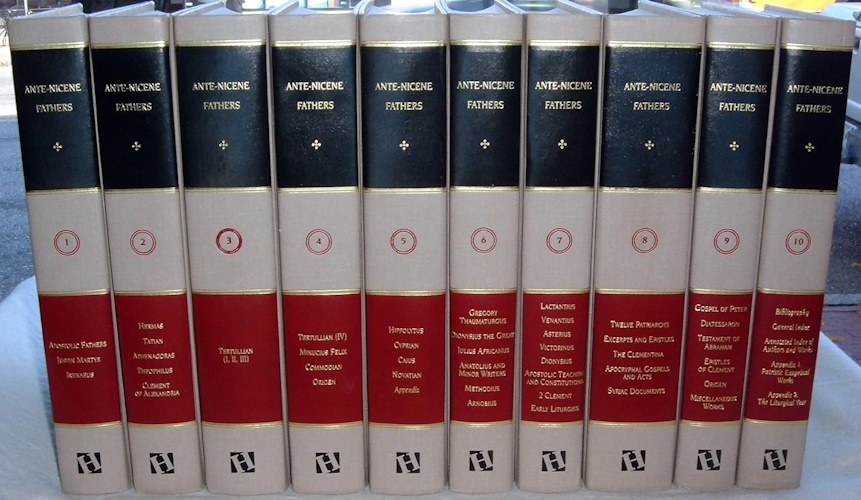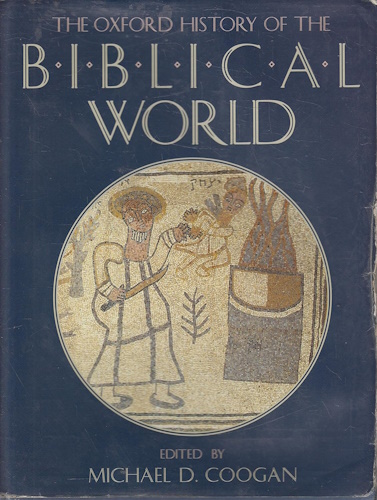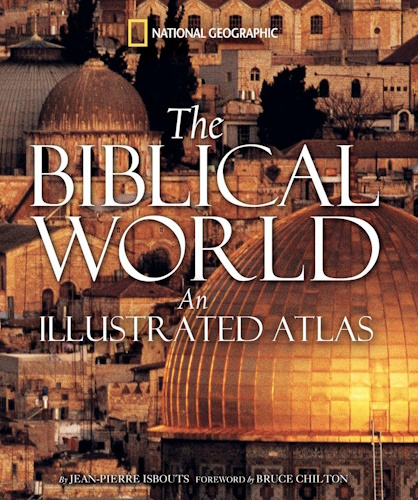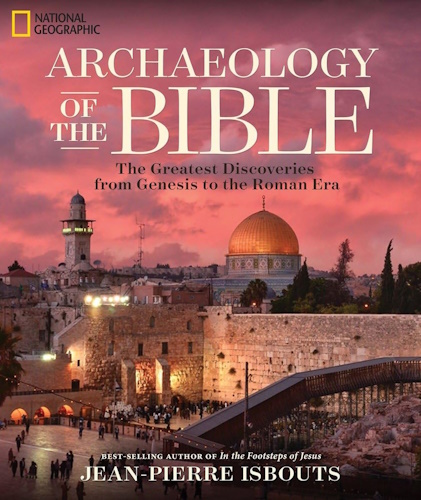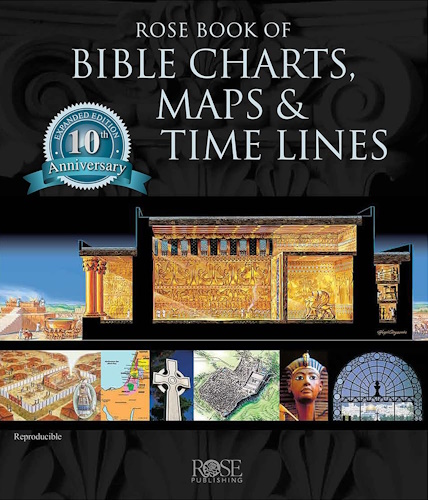
The Pastor of Hermas
Introductory Note
[a.d. 160.] The fragment known as the "Muratorian Canon" is the historic ground for the date I give to this author.1 I desired to prefix The Shepherd to the writings of Irenæus, but the limits of the volume would not permit. The Shepherd attracted my attention, even in early youth, as a specimen of primitive romance; but of course it disappointed me, and excited repugnance. As to its form, it is even now distasteful. But more and more, as I have studied it, and cleared up the difficulties which surround it, and the questions it has started, it has become to me a most interesting and suggestive relic of the primitive age. Dr. Bunsen2 calls it "a good but dull novel," and reminds us of a saying of Niebuhr (Bunsen's master), that "he pitied the Athenian3 Christians for being obliged to hear it read in their assemblies." A very natural, but a truly superficial, thought, as I trust I shall be able to show.
At first sight, Hermas might seem to have little in common with Irenæus; and, on many accounts, it would be preferable to pair him with Barnabas. But I feel sure that chronology forbids, and that the age of Irenæus, and of the martyrs of Lyons and Vienne, is the period which called for this work, and which accounts for its popularity and its diffusion among the churches. Its pacific spirit in dealing with a rising heresy, which at first was a puzzle to the Latins,4 which Pius was disposed to meet by this gentle antidote, with which Eleutherus, in the spirit of a pacificator, tampered to his own hurt, and by which Victor was temporarily compromised, met precisely what the case seemed to demand in the judgment of Western Christians. They could not foresee the results of Montanism: it was not yet a defined heresy. And even the wise prudence of Irenæus shows anxiety not too hastily to denounce it; "seeing," as Eusebius affirms, "there were many other wonderful powers of divine grace yet exhibited, even at that time, in different churches."
Bunsen pronounces magisterially on the Muratorian fragment as an ill-translated excerpt from Hegesippus, written about a.d. 165. This date may be inaccurate, but the evidence is that of a contemporary on which we may rely. "Very recently," he says, "in our own times, in the city of Rome, Hermas compiled The Shepherd; his brother, Bishop Pius,5 then sitting in the cathedra
page 4
of the Roman Church." With the period thus assigned, the internal evidence agrees. It accounts for the anti-Montanism of the whole allegory, and not less for the choice of this non-controversial form of antidote. Montanism is not named; but it is opposed by a reminder of better "prophesyings," and by setting the pure spirit of the apostolic age over against the frenzied and pharisaical pretensions of the fanatics. The pacific policy at first adopted by the Roman bishops, dictated, no doubt, this effort of Hermas to produce such a refutation as his brother6 might commend to the churches.
Let me present, in outline, the views which seem to me necessary to a good understanding of the work; and as I am so unfortunate as to differ with the Edinburgh editors, who are entitled, primâ facie, to be supposed correct, I shall venture to apologize for my own conceptions, by a few notes and elucidations.7
As Eusebius informs us, the charismata were not extinct in the churches when the Phrygian imitations began to puzzle the faithful. Bunsen considers its first propagators specimens of the clairvoyantart, and pointedly cites the manipulations they were said to practice (like persons playing on the harp), in proof of this. We must place ourselves in those times to comprehend the difficulties of early Christians in dealing with the counterfeit. "Try the spirits," said St. John; and St. Paul had said more expressly, "Quench not the Spirit; despise not prophesyings; prove all things," etc. This very expression suggests that there might often be something despicable in the form and manner of uttering what was excellent. To borrow a phrase of our days, "the human element" was painfully predominant at times, even among those who spoke by the Spirit. The smoke of personal infirmity discoloured genuine scintillations from hearts in which still smouldered the fire of Pentecostal gifts. The reticence of Irenæus is therefore not to be marvelled at. He cautioned Eleutherus no doubt, but probably felt, with him, that the rumours from Phrygia needed further examination. The prophetic gifts were said to be lodged in men and women austere as John the Baptist, and professing a mission to rebuke the carnal and self-indulgent degeneracy of a generation that knew not the apostles.
It would not be a very bold conjecture, that Hermas and his brother were elderly grandchildren of the original Hermas, the friend of St. Paul. The Shepherd, then, might be based upon personal recollections, and upon the traditions of a family which the spirit of prophecy had reproved, and who were monuments of its power. The book supplies us with evidences of the awakened conscience with which Hermas strove to "bless his household." But, be this as it may, this second Hermas, with his brother's approbation, undertakes to revive the memory of those primal days portrayed in the Epistle to Diognetus, when Christians, though sorrowful, were "always rejoicing." He compiles accordingly a non-metrical idyl; reproducing, no doubt, traditional specimens of those "prophesyings," on which St. Paul remarks. Hence we infer, that such outpourings as became the subject of apostolic censure, when they confused the order of the Corinthian Church,8 were, in their nobler examples, such "visions," "mandates" and "similitudes" as these; more or less human as to form, but, in their moral teachings, an impressive testimony against heathen oracles, and their obscene or blasphemous suggestions.
The permissive wisdom of the Spirit granting, while restraining, such manifestations, is seen in thus counterbalancing Sibylline and other ethnic utterances. (Acts xvi. 16–19.) With this in view, Hermas makes his compilation. He casts it into an innocent fiction, as Cowper wrote in the name of Alexander Selkirk, and introduces Hermas and Clement to identify the times which are idealized in his allegory. Very gently, but forcibly, therefore, he brings back the original
page 5
Christians as antagonists of the Montanistic opinions; and so exclusively does this idea predominate in the whole work, as Tertullian's scornful comment implies, that one wonders to find Wake, with other very learned men, conceding that the Pauline Hermas was its actual author. Were it so, he must have been a prophet indeed. No doubt those of the ancients who knew nothing of the origin of the work, and accepted it as the production of the first Hermas, were greatly influenced by this idea. It seemed to them a true oracle from God, like those of the Apocalypse, though sadly inferior; preparing the Church for one of its great trials and perils, and fulfilling, as did the Revelation of St. John, that emphatic promise concerning the Spirit, "He shall show you things to come."
This view of the subject, moreover, explains historical facts which have been so unaccountable to many critics; such as the general credit it obtained, and that its influence was greater in the East than among Latins. But once commended to the Asiatic churches by Pius, as a useful instruction for the people, and a safeguard against the Phrygian excesses, it would easily become current wherever the Greek language prevailed. Very soon it would be popularly regarded as the work of the Pauline Hermas, and as embodying genuine prophesyings of the apostolic age. A qualified inspiration would thus be attributed to them, precisely such as the guarded language of Origen9 suggested afterwards: hence the deutero-canonical repute of the book, read, like the Apocrypha, for instruction and edification, but not cited to establish any doctrine as of the faith.10 It must be remembered, that, although the Roman Church was at first a Grecian colony, and largely composed of those Hellenistic Jews to whom St. Paul's arguments in his Epistle to the Romans were personally appropriate, yet in the West, generally, it was not so: hence the greater diffusion of The Shepherd written in Greek, through the Greek churches. There, too, the Montanists were a raging pestilence long before the West really felt the contagion through the influence of the brilliant Tertullian. These facts account for the history of the book, its early currency and credit in the Church. Nor must we fail to observe, that the tedious allegorizing of Hermas, though not acceptable to us, was by no means displeasing to Orientals. To this day, the common people, even with us, seem to be greatly taken with story-telling and "similitudes," especially when there is an interpreter to give them point and application.
After reading Irenæus Against Heresies, then, we may not inappropriately turn to this mild protest against the most desolating and lasting delusion of primitive times. Most bitterly this will be felt when we reach the great founder of "Latin Christianity," whose very ashes breathed contagion into the life of such as handled his relics with affection, save only those, who, like Cyprian, were gifted with a character as strong as his own. The genius of Tertullian inspired his very insanity with power, and, to the discipline of the Latin churches, he communicated something of the rigour of Montanism, with the natural re-actionary relaxation of morals in actual life. Of this, we shall learn enough when we come to read the fascinating pages of that splendid but infatuated author. Montanism itself, and the Encratite heresy which we are soon to consider in the melancholy case of Tatian, were re-actions from those abominations of the heathen with which Christians were daily forced to be conversant. These Fathers erred through a temptation in which Satan was "transformed as an angel of light." Let us the more admire the penetrating foresight, and the holy moderation, of Hermas. To our scornful age, indeed, glutted with reading of every sort, and alike over-cultivated and superficial, taking little time for thought, and almost as little for study, The Shepherd can furnish nothing attractive. He who brings nothing to it, gets nothing from it. But let the fastidious who desire at the same time to be competent judges, put themselves into the times of the Antonines, and make themselves, for the moment, Christians of that period, and they will awaken to a new world of thought. Let such go into the assemblies of the primitive faithful, in which it was evident that "not many wise men after the flesh, not many mighty, not many noble, were called." There they were, "as sheep appointed to be slain,"
page 6
"dying daily," and, like their blessed Master, "the scorn of men, and outcast of the people," as they gathered on the day of the Lord to "eat of that bread, and drink of that cup." After the manner of the synagogue, there came a moment when the "president" said, "Brethren, if ye have any word of exhortation for the people, say on." But the tongues were ceasing, as the apostle foretold; and they who professed to speak by the Spirit were beginning to be doubted. "Your fathers, where are they? and the prophets, do they live forever?" It was gratifying to the older men, and excited the curiosity of the young, when the reader stood up, and said, "Hear, then, the words of Hermas." Blessed were the simple folk, those "lambs among wolves," who hungered and thirsted after righteousness, and who eagerly drank in the pure and searching Scriptural morality of The Shepherd, and then went forth to "shine as lights in the world," in holy contrast with the gross darkness that surrounded them.
It has been objected, indeed, that the morals of Hermas have a legalizing tone. The same is said of St. James, and the Sermon on the Mount. Most unjustly and cruelly is this objection made to The Shepherd. Granted its language is not formulated after Augustine, as it could not be: its text is St. James, but, like St. James, harmonized always with St. Paul.11 Faith is always honoured in its primary place; and penitence, in its every evangelical aspect, is thoroughly defined. He exposes the emptiness of formal works, such as mere physical fastings, and the carnal observance of set times and days. That in one instance he favours "works of supererogation" is an entire mistake, made by reading into the words of Hermas a heresy of which he never dreamed. His whole teaching conflicts with such a thought. His orthodoxy in other respects, is sustained by such masters as Pearson and Bull.12 And then, the positive side of his teaching is a precious testimony to the godly living exacted of believers in the second century. How suitable to all times are the maxims he extracts from the New Law. How searching his exposure of the perils of lax family discipline, and of wealth unsanctified. What heavenly precepts of life he lays down for all estates of men. To the clergy, what rules he prescribes against ambition and detraction and worldly-mindedness. Surely such reproofs glorify the epoch, when they who had cast off, so recently, the lusts and passions of heathenism, were, as the general acceptance of this book must lead us to suppose, eager to be fed with "truth, severe in rugged fiction drest."
But the reader will now be eager to examine the following Introductory Notice of the translator:—
The Pastor of Hermas was one of the most popular books, if not the most popular book, in the Christian Church during the second, third, and fourth centuries. It occupied a position analogous in some respects to that of Bunyan's Pilgrim's Progress in modern times; and critics have frequently compared the two works.
In ancient times two opinions prevailed in regard to the authorship. The most widely spread was, that the Pastor of Hermas was the production of the Hermas mentioned in the Epistle to the Romans. Origen13 states this opinion distinctly, and it is repeated by Eusebius14 and Jerome.15
Those who believed the apostolic Hermas to be the author, necessarily esteemed the book very highly; and there was much discussion as to whether it was inspired or not. The early writers are of opinion that it was really inspired. Irenæus quotes it as Scripture;16 Clemens Alexandrinus speaks of it as making its statements "divinely;"17 and Origen, though a few of his expressions are regarded by some as implying doubt, unquestionably gives it as his opinion that it is "divinely inspired."18 Eusebius mentions that difference of opinion prevailed in his day as to the inspiration of the book, some opposing its claims, and others maintaining its divine origin, especially
page 7
because it formed an admirable introduction to the Christian faith. For this latter reason it was read publicly, he tells us, in the churches.
The only voice of antiquity decidedly opposed to the claim is that of Tertullian. He designates it apocryphal,19 and rejects it with scorn, as favouring anti-Montanistic opinions. Even his words, however, show that it was regarded in many churches as Scripture.
The second opinion as to the authorship is found in no writer of any name. It occurs only in two places: a poem falsely ascribed to Tertullian, and a fragment published by Muratori, on the Canon, the authorship of which is unknown, and the original language of which is still a matter of dispute.20 The fragment says, "The Pastor was written very lately in our times, in the city of Rome, by Hermas, while Bishop Pius, his brother, sat in the chair of the Church of the city of Rome."
A third opinion has had advocates in modern times. The Pastor of Hermas is regarded as a fiction, and the person Hermas, who is the principal character, is, according to this opinion, merely the invention of the fiction-writer.
Whatever opinion critics may have in regard to the authorship, there can be but one opinion as to the date. The Pastor of Hermas must have been written at an early period. The fact that it was recognised by Irenæus as Scripture shows that it must have been in circulation long before his time. The most probable date assigned to its composition is the reign of Hadrian, or of Antoninus Pius.
The work is very important in many respects; but especially as reflecting the tone and style of books which interested and instructed the Christians of the second and third centuries.
The Pastor of Hermas was written in Greek. It was well known in the Eastern Churches: it seems to have been but little read in the Western. Yet the work bears traces of having been written in Italy.
For a long time the Pastor of Hermas was known to scholars only in a Latin version, occurring in several mss. with but slight vacations. But within recent times the difficulty of settling the text has been increased by the discovery of various mss. A Latin translation has been edited, widely differing from the common version. Then a Greek ms. was said to have been found in Mount Athos, of which Simonides affirmed that he brought away a portion of the original and a copy of the rest. Then a ms. of the Pastor of Hermas was found at the end of the Sinaitic Codex of Tischendorf. And in addition to all these, there is an Æthiopic translation. The discussion of the value of these discoveries is one of the most difficult that can fall to the lot of critics; for it involves not merely an examination of peculiar forms of words and similar criteria, but an investigation into statements made by Simonides and Tischendorf respecting events in their own lives. But whatever may be the conclusions at which the critic arrives, the general reader does not gain or lose much. In all the Greek and Latin forms the Pastor of Hermas is substantially the same. There are many minute differences; but there are scarcely any of importance,—perhaps we should say none.
In this translation the text of Hilgenfeld, which is based on the Sinaitic Codex, has been followed.
The letters Vat. mean the Vatican manuscript, the one from which the common or Vulgate version was usually printed.
The letters Pal. mean the Palatine manuscript edited by Dressel, which contains the Latin version, differing considerably from the common version.
The letters Lips. refer to the Leipzig manuscript, partly original and partly copied, furnished by Simonides from Athos. The text of Anger and Dindorf (Lips., 1856) has been used, though reference has also been made to the text of Tischendorf in Dressel.
page 8The letters Sin. refer to the Sinaitic Codex, as given in Dressel and in Hilgenfeld's notes.
The letters Æth. refer to the Æthiopic version, edited, with a Latin translation, by Antonius D'Abbadie. Leipzig, 1860.
No attempt has been made to give even a tithe of the various readings. Only the most important have been noted.
[It is but just to direct the reader's attention to an elaborate article of Dr. Donaldson, in the (London) Theological Review, vol. xiv. p. 564; in which he very ingeniously supports his opinions with regard to Hermas, and also touching the Muratorian Canon. In one important particular he favours my own impression; viz., that The Shepherd is a compilation, traditional, or reproduced from memory. He supposes its sentiments "must have been expressed in innumerable oral communications delivered in the churches throughout the world."]
1 To be found, with copious annotations, in Routh's Reliquiæ, vol. i. pp. 389–434, Oxford, 1846. See also Westcott, On the Canon of the New Testament, Cambridge, 1855.
2 Hippolytus and His Age, vol. i. p. 315.
3 Why "Athenian"? It was read everywhere. But possibly this is a specification based on Acts xvii. 21. They may have welcomed it as a novel and a novelty.
4 More of this in Athenagoras; but see Kaye's Justin Martyr, p. 179, note 3, ed. 1853.
5 Roman fabulists know all about Pius, of course, and give us this history: "He was a native of Aquileia, and was elected bishop on the 15th of January, a.d. 158 … He governed the Church nine years, five months, and twenty-seven days." So affirms that favourite of Popes, Artaud de Montor (Histoire de Pie VIII., p. xi. Paris, 1830).
6 The latest learned authority among Roman Catholics, a Benedictine, gives us the dates a.d. 142–156, respectively, as those of his election and decease. See Series Episcoporum, etc. P. B. Gams, Ratisbonæ, 1873.
7 Relying upon the invaluable aid of Dr. Routh, I had not thought of looking into Westcott, till I had worked out my own conclusions. I am greatly strengthened by his elaborate and very able argument. See his work on the Canon, pp. 213–235.
8 1 Cor. xiv. The value of Hermas in helping us to comprehend this mysterious chapter appears to me very great. Celsus reproached Christians as Sibyllists. See Origen, Against Celsus, book v. cap. lxi.
9 Westcott, p. 219. Ed. 1855, London.
10 Hieron., tom. 1. p. 988, Benedictine ed.
11 Bull (and Grabe), Harmonia Apostolica; Works, vol. iii.
12 Pearson, Vindiciæ Ignat., i. cap. 4. Bull, Defens. Fid. Nicæn., 1. cap. 2. sec. 3; Works, vol. v. part i. p. 15.
13 Comment. in Rom. xvi. 14, lib. x. 31. [But see Westcott's fuller account of all this, pp. 219, 220.]
14 Hist. Eccl. iii. 3.
15 De Viris Illustribus, c. x.
16 Contra Hæres., iv. 20, 2.
17 Strom., i. xxi. p. 426.
18 Ut supra.
19 De Pudicitia, c. xx., also c. x.; De Oratione, c. xvi.
20 [This statement should be compared with Westcott's temperate and very full account of the Muratorian Fragment, pp. 235–245.]
The Pastor of Hermas - Introductory Note
![]()
![]()
-
Urantia Book, 44:0.11 - The Celestial Artisans
Never in your long ascendancy will you lose the power to recognize your associates of former existences. Always, as you ascend inward in the scale of life, will you retain the ability to recognize and fraternize with the fellow beings of your previous and lower levels of experience. Each new translation or resurrection will add one more group of spirit beings to your vision range without in the least depriving you of the ability to recognize your friends and fellows of former estates.
-
Princess Bride 1987 Wallace Shawn (Vizzini) and Mandy Patinkin (Inigo Montoya)
Vizzini: HE DIDN'T FALL? INCONCEIVABLE.
Inigo Montoya: You keep using that word. I do not think it means what you think it means. -
Urantia Book, 117:4.14 - The Finite God
And here is mystery: The more closely man approaches God through love, the greater the reality -- actuality -- of that man. The more man withdraws from God, the more nearly he approaches nonreality -- cessation of existence. When man consecrates his will to the doing of the Father's will, when man gives God all that he has, then does God make that man more than he is.
-
Urantia Book, 167:7.4 - The Talk About Angels
"And do you not remember that I said to you once before that, if you had your spiritual eyes anointed, you would then see the heavens opened and behold the angels of God ascending and descending? It is by the ministry of the angels that one world may be kept in touch with other worlds, for have I not repeatedly told you that I have other sheep not of this fold?"
-
Urantia Book, Foreword - 0:12.12 - The Trinities
But we know that there dwells within the human mind a fragment of God, and that there sojourns with the human soul the Spirit of Truth; and we further know that these spirit forces conspire to enable material man to grasp the reality of spiritual values and to comprehend the philosophy of universe meanings. But even more certainly we know that these spirits of the Divine Presence are able to assist man in the spiritual appropriation of all truth contributory to the enhancement of the ever-progressing reality of personal religious experience—God-consciousness.
-
Urantia Book, 1:4.3 - The Mystery Of God
When you are through down here, when your course has been run in temporary form on earth, when your trial trip in the flesh is finished, when the dust that composes the mortal tabernacle "returns to the earth whence it came"; then, it is revealed, the indwelling "Spirit shall return to God who gave it." There sojourns within each moral being of this planet a fragment of God, a part and parcel of divinity. It is not yet yours by right of possession, but it is designedly intended to be one with you if you survive the mortal existence.
-
Urantia Book, 1:4.1 - The Mystery Of God
And the greatest of all the unfathomable mysteries of God is the phenomenon of the divine indwelling of mortal minds. The manner in which the Universal Father sojourns with the creatures of time is the most profound of all universe mysteries; the divine presence in the mind of man is the mystery of mysteries.
-
Urantia Book, 1:4.6 - The Mystery Of God
To every spirit being and to every mortal creature in every sphere and on every world of the universe of universes, the Universal Father reveals all of his gracious and divine self that can be discerned or comprehended by such spirit beings and by such mortal creatures. God is no respecter of persons, either spiritual or material. The divine presence which any child of the universe enjoys at any given moment is limited only by the capacity of such a creature to receive and to discern the spirit actualities of the supermaterial world.
-
Urantia Book, 11:0.1 - The Eternal Isle Of Paradise
Paradise is the eternal center of the universe of universes and the abiding place of the Universal Father, the Eternal Son, the Infinite Spirit, and their divine co-ordinates and associates. This central Isle is the most gigantic organized body of cosmic reality in all the master universe. Paradise is a material sphere as well as a spiritual abode. All of the intelligent creation of the Universal Father is domiciled on material abodes; hence must the absolute controlling center also be material, literal. And again it should be reiterated that spirit things and spiritual beings are real.
-
Urantia Book, 50:6.4 - Planetary Culture
Culture presupposes quality of mind; culture cannot be enhanced unless mind is elevated. Superior intellect will seek a noble culture and find some way to attain such a goal. Inferior minds will spurn the highest culture even when presented to them ready-made.
-
Urantia Book, 54:1.6 - True And False Liberty
True liberty is the associate of genuine self-respect; false liberty is the consort of self-admiration. True liberty is the fruit of self-control; false liberty, the assumption of self-assertion. Self-control leads to altruistic service; self-admiration tends towards the exploitation of others for the selfish aggrandizement of such a mistaken individual as is willing to sacrifice righteous attainment for the sake of possessing unjust power over his fellow beings.
-
Urantia Book, 54:1.9 - True And False Liberty
How dare the self-willed creature encroach upon the rights of his fellows in the name of personal liberty when the Supreme Rulers of the universe stand back in merciful respect for these prerogatives of will and potentials of personality! No being, in the exercise of his supposed personal liberty, has a right to deprive any other being of those privileges of existence conferred by the Creators and duly respected by all their loyal associates, subordinates, and subjects.
-
Urantia Book, 54:1.8 - True And False Liberty
There is no error greater than that species of self-deception which leads intelligent beings to crave the exercise of power over other beings for the purpose of depriving these persons of their natural liberties. The golden rule of human fairness cries out against all such fraud, unfairness, selfishness, and unrighteousness.
